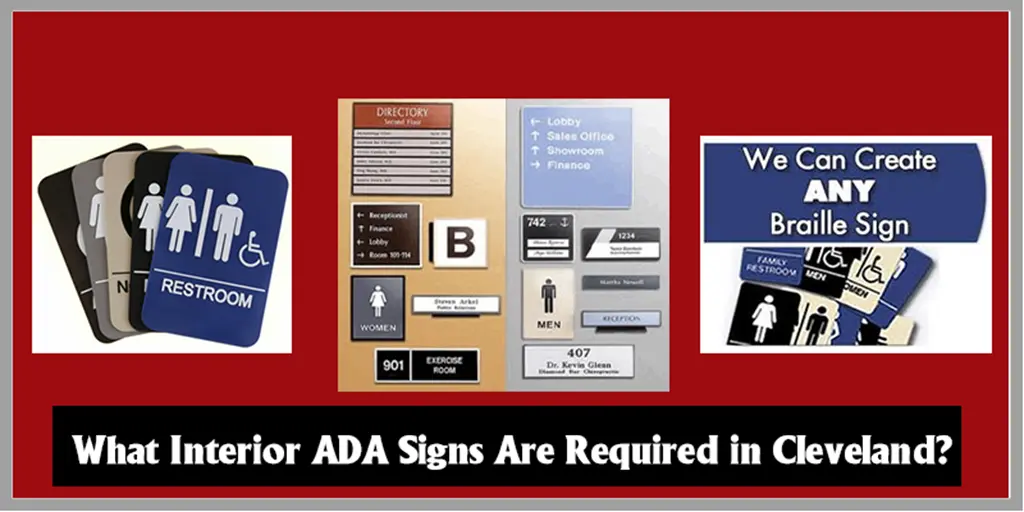
What Interior ADA Signs Are Required in Cleveland?
One of the most confusing signage aspects for our business clients is the purchase of products that comply with the Americans with Disabilities Act (ADA). ADA signs for Cleveland companies can mean different things to different businesses – depending on their sizes and room designations. To make this mandated marker purchase a bit easier to understand, the professionals at BlinkSigns have put together a question and answering session that covers most of the highlights.
One of the most confusing signage aspects for our business clients is the purchase of products that comply with the Americans with Disabilities Act (ADA). ADA signs for Cleveland companies can mean different things to different businesses – depending on their sizes and room designations. To make this mandated marker purchase a bit easier to understand, the professionals at BlinkSigns have put together a question and answering session that covers most of the highlights.
Q: What differentiates ADA signs from other interior markers?
A: Interior ADA signs cater primarily to consumers with visual disabilities. For this reason, they usually feature bold colors with noticeable contrasts, Braille lettering and certain mounting heights and locations.
Q: Do all signs need to have Braille lettering?
A: Not necessarily. For example, directories generally do not require you to include Braille while room designation signs do. Work with our experts to discern which of your signage solutions should feature this addition.
Q: Is it true that there are outdated ADA standards?
A: Yes, it is. Signage setups that comply with 1991 standards became obsolete in 2012. Although your venue is grandfathered in and considered to be compliant if you do not upgrade the signage setup, you will lose this designation if you make any changes to your room setup or commission new signs. This is a somewhat tricky issue and well worth exploring with our technicians.
Q: Do all rooms need to display ADA signs?
A: Rooms that will be permanently used for their current functions do require this directional signage solution. Examples include conference rooms, kitchens and other interior rooms that maintain their uses. Rooms that change designations frequently – storage areas, temporary office spaces for seasonal workers and similar impermanent spaces – do not necessarily call for ADA-compliant signage.
Q: What happens if I do not install ADA signs?
A: Although the ADA has led to the adoption of numerous rules, it is up to the business owner to ensure compliance. Working with a knowledgeable signage maker eases the navigation of the legal maze. If you decide to simply ignore the law, there is a good chance that you are going to get caught and fined. In addition, the willful neglect of this signage type leads to a loss of reputation. After all, making a building or office accessible for all consumers should be the goal of any company. Failure to do so puts you in a bad light within the business community and among consumers.
Q: I have more questions. Who can help?
A: Contact our graphic artists for more information on ADA compliant signs in Cleveland. We work with you to design a suite of signs that brands your business, markets your products and follows the ADA to the letter. Just because a sign is considered compliant does not mean that it has to visually not fit into your overall setup. Our technicians are well versed in meeting the requirements of the law, and they can help you decide which signs need to be installed and which do not have to comply.